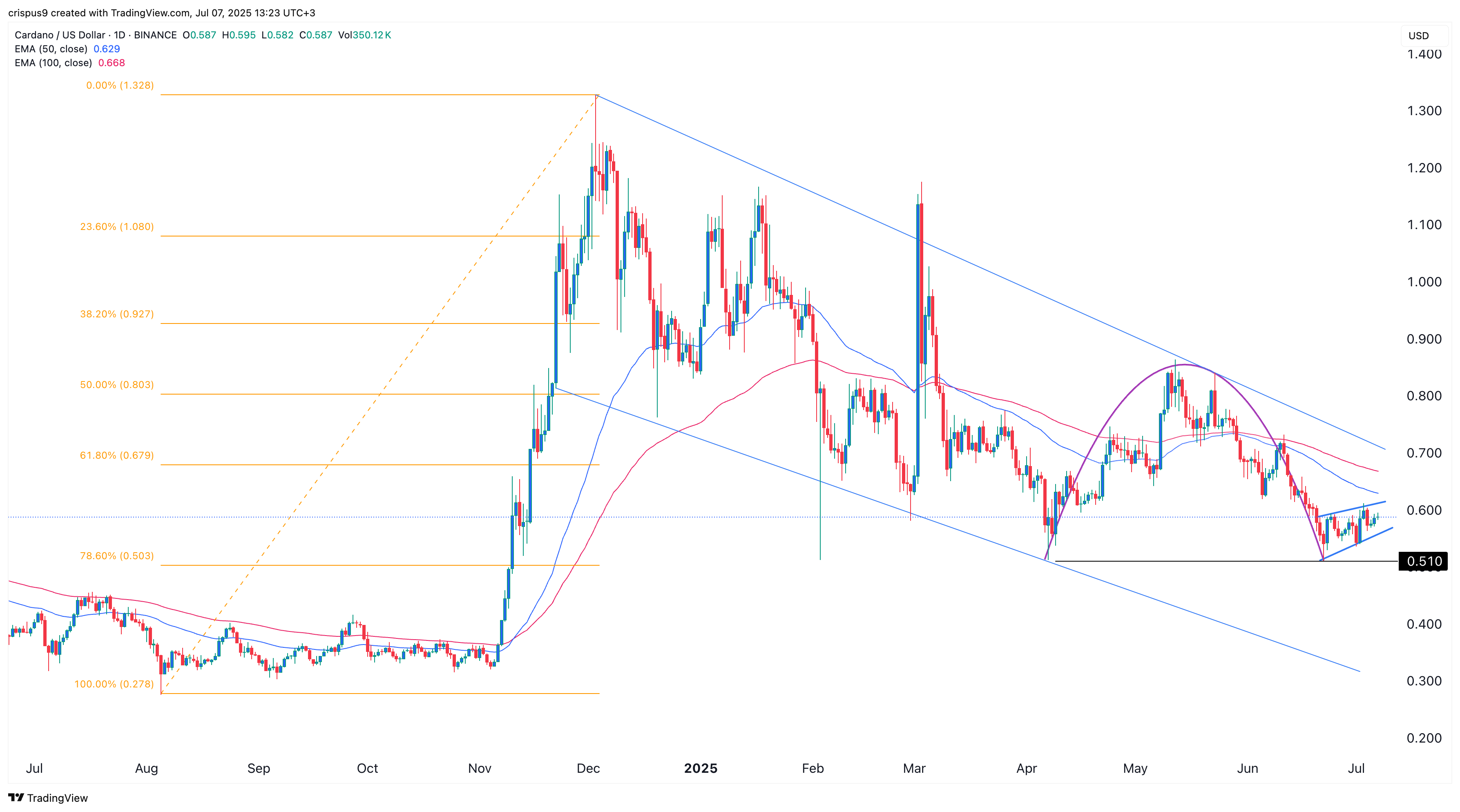Cardano price at risk as key ecosystem metrics tumble
Cardano price has plunged into a bear market, falling by over 55% from its highest point in November last year.
Cardano (ADA) dropped to $0.587 and is at risk of more downside as key metrics deteriorate and a bearish pattern forms.
DeFi Llama data shows that the total value locked has plunged by 15% in the last 30 days to $324 million. Only eight dApps in the ecosystem have a total value locked of over $10 million.
Cardano’s DeFi TVL has been overtaken by many newly formed blockchains like Unichain, Sonic, Sui, Sei, and Berachain. That is a sign that the network is not gaining traction among investors and developers.
Additional data indicates that Cardano’s stablecoin supply has remained at $30 million over the past few months. This is a small number considering the stablecoin industry is valued at over $250 billion.
Worse, many Cardano stablecoins have depegged and are trading below $1. Moneta, Anzens, and Djed have all dropped to $0.98, much lower than $1. The biggest stablecoins in crypto, like USDT, USDC, PYUSD, and RLUSD, have all avoided Cardano despite its size.
Further, Cardano’s DEX volume is minuscule, a sign that just a few people are interacting with the network. Cardano’s DEX volume in the last 30 days was $99 million.
In contrast, Base, a layer-2 network created in 2023, handled over $632 million in the last 24 hours. Unichain, which Uniswap (UNI) launched in March, handled over $203 million in this period.
Charles Hoskinson and the Input Output team are working on several initiatives to boost its ecosystem growth, but it is unclear whether they will lead to more robust expansion.
They are building Leios, an update to Cardano that will introduce parallel processing, increasing throughput. It will also have a unique structure comprising input blocks to collect and aggregate transactions, endorsement blocks to verify and approve them, and confirmation blocks to finalize them.
Midnight, on the other hand, is a layer-2 network that employs zero-knowledge proofs to enhance transaction privacy. While these initiatives are promising, it is unclear whether they will attract developers to Cardano.
Cardano price technical analysis

The daily chart points to more ADA price sell-off. It remains below the 61.8% Fibonacci retracement level. It has also moved below the 50-day and 100-day moving averages and has formed a large descending channel.
Cardano price has also formed an inverse cup-and-handle pattern, a common bearish continuation signal. It is now in the handle section, and a drop below the lower side will point to further downside, potentially to the 78.6% retracement point at $0.50.
You May Also Like

Solo Bitcoin Miner Strikes Gold, Nets Nearly $350,000 from Single Block

Dow Jones down 500 points after Trump’s tariff deadline looms
